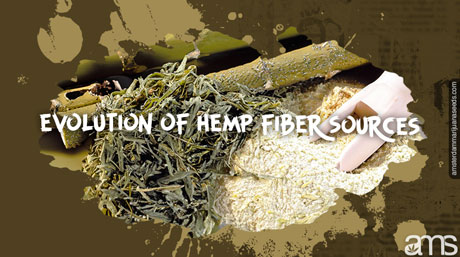In recent years, our collective consciousness has been attuned to the urgent need for sustainability and the use of renewable resources. This awakening has not only forced us to re-evaluate our reliance on conventional resources but has also led us to rediscover the potential of some ancient materials, with hemp being a prime example. Known for its versatility, industrial hemp can be transformed into a multitude of products, including textiles, biofuels, and food, along with finding usage in the medicinal field. One application that has begun to attract more attention is the creation of hemp paper.
Hemp paper is a form of paper produced using pulp derived from the fibers of industrial hemp. Historically, it has been leveraged to create a wide range of specialty papers, including cigarette paper, banknotes, and technical filter papers. These are niche markets, where the particular properties of hemp paper are particularly valued. However, the advantages of hemp paper make it a viable candidate for broader applications as well, which is something that warrants further exploration.
Among the most impressive characteristics of hemp paper is its durability and strength. Hemp fibers are four to five times longer than those from wood pulp, which imparts hemp paper with higher tear resistance and tensile strength. This strength doesn’t compromise flexibility, making hemp paper an exceptional material for a variety of uses.
The lower lignin content in hemp as compared to wood further enhances its appeal. Lignin is a component found in both wood and hemp, but it must be removed during the paper production process as it interferes with the bonding of fibers. The chemical removal process is not only cost-intensive but also has environmental implications due to the release of pollutants. With hemp containing only 5–24% lignin, compared to the 20-35% found in wood, the processing of hemp into paper requires significantly fewer chemicals. This makes the production process less harmful to the environment, offering another point in favor of hemp paper.

Nevertheless, despite its notable benefits, hemp paper is not as prevalent as one might expect. The main barriers to its widespread adoption lie in production costs and issues of scalability. The paper industry’s infrastructure and processes have been optimized over centuries to accommodate wood as the primary raw material. Adapting these systems to process hemp, with its different properties, would require considerable investment.
This initial exploration of hemp paper provides a snapshot of its potential benefits but also highlights the existing barriers to its widespread adoption. What becomes clear is that, as our society strives for more sustainable living and renewable resources, we need to keep pushing the boundaries of innovation and look for ways to overcome these hurdles. The journey of hemp paper, from ancient times to the present, provides valuable insights and lessons for the road ahead.
In our quest to appreciate the potential of hemp paper, it is essential to reflect on its historical journey and observe the shifts in its use over time. This allows us to comprehend the broader socio-political contexts that have influenced the production and use of hemp paper, as well as gain insight into the cultural significance it has held across different civilizations.
The origins of hemp paper can be traced back to ancient China during the early Western Han dynasty, over two millennia ago. The innovative paper-making process, developed around this period, utilized a diverse range of materials, including hemp ends. This achievement predates the official invention of papermaking by Cai Lun by nearly 200 years. The Chinese appreciated hemp for its versatile applications, which included clothing, rags, and fishing nets. These recycled hemp products became essential inputs for paper production, showcasing an early example of resourceful recycling.
By the sixth century AD, the art of papermaking spread across East Asia, reaching regions such as Korea and Japan. These cultures had a long-established connection with cannabis, dating back thousands of years, further strengthening their affinity for hemp-based products. The evolution and spread of hemp paper during these early centuries offer a testament to the enduring quality of this natural resource.
It wasn’t until the 13th century that hemp paper arrived in Europe, through routes established by trade and cultural exchange with the Middle East. Germany adopted hemp paper production in the 14th century, illustrating a spreading appreciation for this sustainable resource across Europe. Despite the growing popularity, the advent of wood pulp paper production in the 19th century brought a significant shift. Although not necessarily cheaper, the use of wood for paper was more aligned with existing industrial processes and capitalized on already available wood resources, effectively pushing hemp into the background.
In the following century, the Saint Petersburg paper mill in Russia, established in 1818, serves as a prominent example of the continued use of hemp in paper production. This mill utilized hemp as its primary material, generating a variety of paper products, including banknotes, postal stamps, and watermarked paper. This highlights the vital role that hemp played in several essential societal and economic systems at the time.
Reflecting upon the history of hemp paper reveals a dynamic interplay of technological advancements, cultural preferences, and economic considerations. Despite its early prominence and the inherent benefits of hemp paper, the rise of wood pulp paper led to a reduction in its use. As we stand at the precipice of environmental crisis, looking back at these historical contexts could potentially guide us in reviving the application of this renewable resource while avoiding the pitfalls of the past.

As the world transitioned into the 20th century, there were significant advancements and transformations within numerous industries, including the paper industry. The century began on an optimistic note for hemp paper, with research reinforcing its potential as a viable raw material for paper manufacturing.
One such pivotal research was conducted in 1916 by U.S. Department of Agriculture chief scientists Lyster Hoxie Dewey and Jason L. Merrill. The duo succeeded in creating paper made entirely from hemp pulp. Their findings underscored the potential of hemp hurds (the woody inner part of the hemp stalk), asserting that they provided a paper quality “favorable in comparison with those used with pulp wood.” This assertion was backed by the chemical similarity between hemp hurds and wood, further positioning hemp as a sustainable alternative for paper production.
The data supporting this claim was robust. Dried hemp consists of about 57% cellulose, the primary ingredient in paper, while wood only contains around 40–50% cellulose. This higher cellulose content in hemp provides a stronger and more durable paper product. Moreover, as previously mentioned, the lower lignin content in hemp (5–24%) compared to wood (20-35%) means that hemp requires fewer chemicals to process into paper, offering both economic and environmental advantages.
However, despite these promising findings, hemp cultivation in the U.S. continued to decline until 1933, dropping to around 500 tonnes per year. Although there was a minor resurgence in hemp cultivation between 1934 and 1935, it was insufficient to bring about a substantial increase in the production of hemp paper.
This period also saw the War on Drugs campaign, leading to stringent regulations that significantly curtailed hemp cultivation. In 1937, the Marihuana Tax Act was passed in the U.S., placing a hefty tax on the sale of cannabis (including hemp). This further deterred farmers from growing hemp and led to a decrease in hemp paper production.
The historical events of the 20th century presented a mix of promise and setbacks for hemp paper. The research advancements highlighted its potential as an alternative to wood pulp paper. However, socio-political factors such as the War on Drugs campaign and the associated legislation created formidable obstacles that stymied its progress. In reflecting on these developments, we gain valuable insights into the forces that have shaped the trajectory of hemp paper over the years and continue to influence its role in today’s society.

The era following World War II heralded significant changes in the global landscape, including the further decline of hemp cultivation and hemp paper production. Despite the development of industrial hemp varieties with almost no THC content in the 1950s and 1960s, the global political climate had become increasingly hostile toward cannabis plants, including hemp. A consequence was the near prohibition of hemp cultivation in many countries, even those that had a long history with the plant.
Germany, for instance, completely banned hemp cultivation from 1982 to 1995 through the Betäubungsmittelgesetz (Narcotics Act), intending to prevent the illegal use of cannabis as a narcotic. This regulatory environment had severe implications for the hemp industry, including paper production. Despite the abundant advantages of hemp paper, such as its higher tear resistance, tensile strength, and longevity, the legal limitations profoundly impacted its production.
Yet, it’s essential to highlight that not all countries had the same stance. Notably, France maintained the cultivation of specific hemp varieties, mainly for cigarette paper production. These French hemp crops, even by 1994, were used predominantly to manufacture high-quality papers, including rolling paper, currency, and even ‘India paper’ for Bibles. This highlights a crucial continuity in the demand for hemp paper for specialized purposes, even amid growing legal and societal challenges.
Furthermore, the period also witnessed the survival and growth of hemp on micro plots. These small-scale cultivations served as a testament to the resilience of hemp as a crop and its sustained demand, despite significant legal restrictions and societal stigma. These micro-cultivations helped keep the knowledge and techniques of hemp cultivation and processing alive, contributing to the potential resurgence of hemp paper in the future.
Examining this era reminds us that political and legal contexts play a significant role in shaping industrial practices. Despite the promising qualities of hemp as a paper source, its association with cannabis and resultant legal challenges greatly hindered its production. However, the survival of hemp in certain regions and for specific purposes underscores its enduring demand and potential for revival. The post-war era’s lessons provide crucial insights that could guide the sustainable and legally sound reintegration of hemp paper into our economies.

As the industrialization of paper production advanced, the primary source of paper fiber transitioned from recycled textiles, known as rags, to wood pulp. In the pre-industrial era, rags, primarily composed of hemp, linen, and cotton fibers, were extensively used. However, a significant change occurred in 1774, when German jurist Justus Claproth invented a method to remove printing inks from recycled paper – a process we now call deinking. This breakthrough made it feasible to use recycled paper as a source of fiber, thereby reducing the dependency on ragpickers.
The introduction of wood pulp in 1843 marked a turning point in the paper industry. It provided a more abundant and consistent supply of raw materials, driving the further decline in the use of hemp and other plant-based fibers in paper production. Yet, it’s worth noting that the shift to wood pulp was not without its drawbacks. The increased reliance on wood for paper production has contributed significantly to deforestation and associated environmental issues.
In the contemporary era, hemp pulp has carved out a small but crucial niche for itself in the paper market, particularly in specialty papers like cigarette paper. However, hemp fiber is often mixed with other fibers, and there has been limited production of 100% hemp paper since 1994. Part of the challenge lies in the economic viability of hemp paper production. The production cost of hemp pulp is roughly six times that of wood pulp, primarily due to the small-scale and outdated equipment in the few hemp processing plants in the Western world.
Additionally, the supply chain for hemp is also more labor-intensive. Hemp is harvested once a year, and the harvested stalks need to be stored and manually handled throughout the year. Moreover, only about 25% of the dried hemp stem—the bark or bast—contains the long, strong fibers necessary for paper production. This leads to a high raw material cost and underscores the need for innovative solutions to make hemp paper production more economically viable. Despite these challenges, hemp pulp offers an environmentally sustainable alternative to wood pulp, and advancements in technology may yet open the door to its wider use.

The niche that hemp paper has carved out for itself in the paper market is substantial. At the close of the 20th century, the production of hemp paper represented the overwhelming majority (90%) of the legal uses of hemp in Europe. With the loosening restrictions on the cultivation of industrial hemp in parts of Europe, hemp has found its way into other product lines, such as textiles and natural fiber-reinforced plastics, reducing its paper market share to around 70-80%. Despite this reduction, hemp paper remains a key product line in the European hemp industry.
In Spain and the United Kingdom, for example, hemp is still utilized in the production of cigarette paper, underlining its continued relevance in specialized sectors. At the turn of the millennium, the production volume for flax and hemp pulp totaled between 25,000 to 30,000 tonnes per year, which was produced from about 37,000 to 45,000 tonnes of fibers. An overwhelming majority, up to 80%, of the produced pulp was used for specialty papers, including 95% of cigarette paper.
In terms of the broader market outlook, the growth for hemp paper seems rather limited. The market is largely saturated, and no significant growth is predicted in the near term. However, that should not undermine the potential benefits and opportunities that hemp paper presents, especially from an environmental perspective.
Hemp has several environmental advantages that make it a compelling choice for paper production. For instance, an acre of hemp can produce four times the amount of paper pulp compared to trees, marking a significantly higher yield. Hemp paper can also be recycled 7-9 times, far surpassing the 4 times recyclability of tree paper. Furthermore, it takes fewer chemicals and less bleach to color hemp paper, reducing the environmental impact of the paper bleaching process.
Thus, while the market share and immediate growth prospects for hemp paper may seem limited, its environmental advantages and sustainability potential indicate a promising future. The adoption of more innovative, efficient, and cost-effective hemp processing techniques could be the key to unlocking a significant shift toward environmentally friendly paper production. The use of hemp paper could be a step in the right direction toward a sustainable and ecologically responsible future.
Hemp paper offers several environmental benefits, including higher yield compared to trees, the ability to be recycled 7-9 times, and reduced chemical and bleach usage during production. These advantages make hemp paper a sustainable and eco-friendly choice for paper production.
Hemp paper has a long history, dating back over two millennia to ancient China. It was utilized for various purposes, including clothing and fishing nets, and played a vital role in early papermaking. Its production spread to other regions such as Korea, Japan, and Europe, showcasing its enduring quality and cultural significance.
The main obstacles to the widespread adoption of hemp paper are production costs and scalability issues. The paper industry's infrastructure and processes are optimized for wood pulp, requiring significant investment and adaptation to accommodate hemp as a raw material. Overcoming these challenges is essential to promote the broader use of hemp paper and realize its environmental and economic benefits.













Related Posts

Embracing hemp fiber insulation in the construction sector marks an essential stride towards eco-friendliness and sustainability. As our understanding of the impacts of climate change and environmental degradation expands, so does our drive to implement solutions. The urgency to shift to renewable and eco-friendly materials is more prevalent than ever. The construction industry, a major source of global carbon emissions…

Hemp is known to be one of the oldest crops cultivated by mankind. But what is hemp and what is the difference with cannabis?

There is a lengthy list of the possibilities of what the Industrial Hemp (Hemp) plant can do. From building houses to cars, from food to textiles. This low THC plant has more to offer than you could possibly imagine.